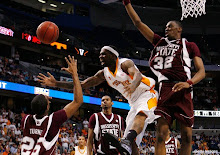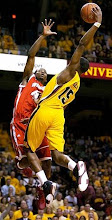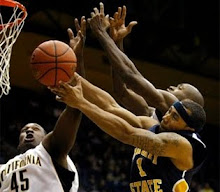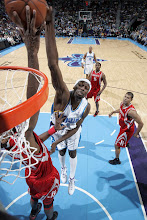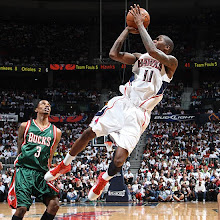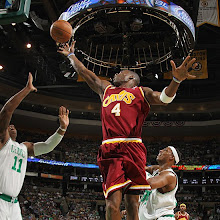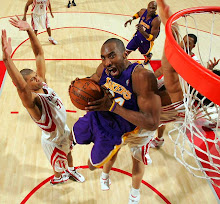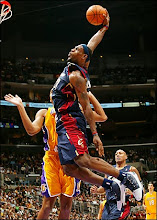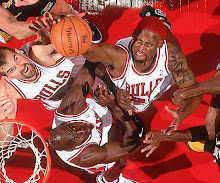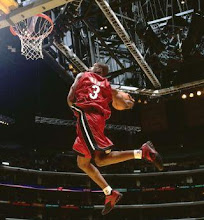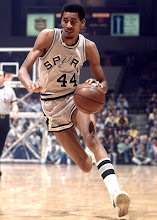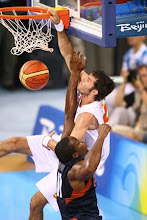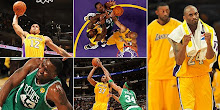Cuando el Peñas de Huesca jugaba sus encuentros en la ACB en el viejo Pabellón del Parque no se registraban entradas de más de 3.000 espectadores, pero las gradas de los fondos, detrás de las canastas, estaban a rebosar (los aficionados a centímetros de la pista, casi pisando el parqué) y eran el factor esencial de la olla a presión legendaria que ayudó a los peñistas a ganar muchos partidos disputados en los años 80 y 90...

The highest pressure situation is probably when a player’s team is down by one point, because making the free throw will tie the game. In this situation, players made around 69% of their free throw. Overall, these players made about 76% of their free throws during the season, so they shot much worse when their team was down by 1 than they did overall. This difference was statistically reliable.
Now, just seeing this number, there are lots of possible explanations. Perhaps players are just tired at the end of the game, and so they tend to shoot worse. A good comparison case is what happens when the teams are tied. This situation is much less pressure-packed, because even if the player misses the free throw, the game is still tied. The player has the chance to be a hero, but without the risk of failure. In this case, the players made about 78% of their free throws. These players also tended to make about 76% of their free throws overall, so they were actually slightly above their season average for this shot (though the difference was not statistically significant).
Looking more broadly at the data, players were statistically worse than their season average when their team was down by 2 points (72% made compared to a season average of about 77%), and when their team was up by 1 point (also 72% compared to a season average of a about 77%). When the teams were separated by 3 or more points in any direction, the players shot free throws at about their season average.
So what, exactly, is behind the phenomenon of choking? There are several potential explanations, which are not mutually exclusive of each other. The first revolves around emotional regulation. This is certainly the most intuitive, and most easily felt, explanation. Anyone who has experienced a pressure situation can recognize the feeling of tightness and nerves associated with the expectations and fear of failure that go along with pressure, and there is a lot of research to support the idea that emotional regulation is an important aspect of clutch performance.
Another way of explaining the disruptive influence of pressure is via self-consciousness and explicit and implicit memory loops. An expert like an NBA player has shot so many free throws, and has that particular skill so refined, that they hardly have to consciously “think” about it all in order to do it successfully. In fact, thinking about the mechanics of shooting that free throw is likely to screw them up. Thinking and planning a movement is something that novices, who haven’t yet refined that skill, have to do in order to perform it more successfully. In fact, it has been observed that instructing skilled soccer and baseball players to consciously attend to the biomechanics of a simple task like dribbling a soccer ball or swinging a bat causes them to perform worse than when they perform a skill naturally. It has been theorized that high stakes cause athletes to overthink and become self-conscious about their movements, which in turn causes them to revert back to the rigid movement patterns of a less-experienced performer. This has been observed in disciplines from rock-climbers to weightlifters to piano players. The mind can get in the way of the body smoothly carrying out what it already knows how to do.
Still another way of describing what happens is through the lens of neuroscience and brain activity. Some of the best research around the brain activity patterns of experts has been done by Brad Hatfield at the University of Maryland. His research around expert marksmen (marksmen are easy to study with brain imaging equipment because their heads don’t move while they perform) has shown that their brains are, in fact, ‘quieter’ and more economical than the brains of novices. In effect, they tune everything else out so thoroughly that only the most essential brain areas associated with the task are turned on and working. Novices, on the other hand, exhibited not only more brain activity, but activity that suggested communication between areas of the brain associated with motor control and areas associated with conscious, cognitive thought and analysis. Several studies on athletes and clutch performance of skilled tasks have associated a certain type of quiet, focused brain state with successful performance. In effect, a quiet brain is an expert brain, and a quiet brain is a clutch brain, too.
How do all of these theories around clutch performance fit together? We don’t exactly know just yet. But in the way that a heightened emotional state, altered brain activity, and movement patterns that deviate from normal automatic function all seem to fit together, a coherent theory around the causes of choking is beginning to emerge.
The intriguing question that the research raises is: so if we understand something about how the brain works–or doesn’t–in pressure situations, is there anything that could be developed to train people to perform better? Could neurofeedback, technology that relays information about a subject’s current brain state back to them, be used to train an athlete’s ability to reach an optimal cognitive state? These are the types of questions we are asking at Axon, and the avenues that we are seeking to explore.
http://axonpotential.com/the-science-behind-choking/






